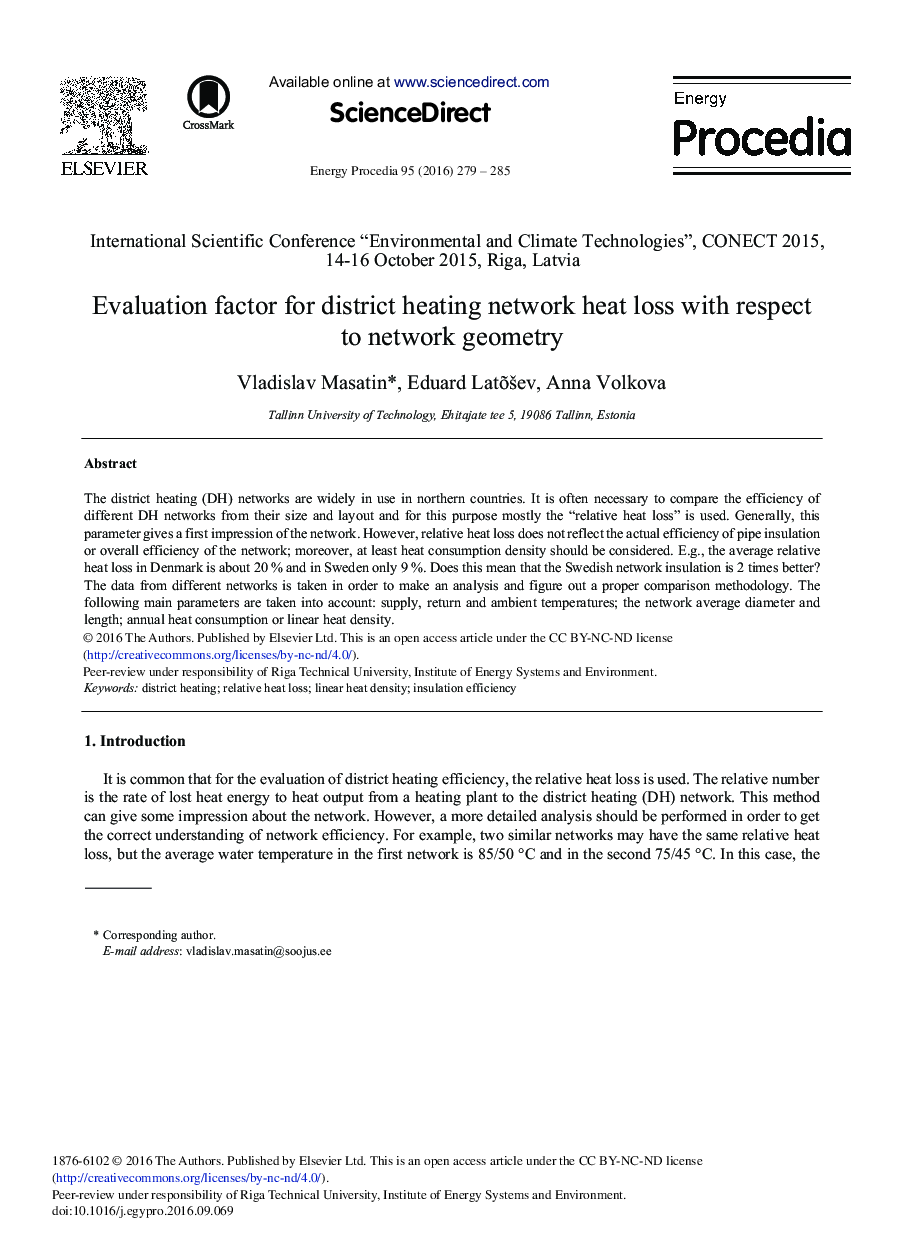| Article ID | Journal | Published Year | Pages | File Type |
|---|---|---|---|---|
| 5446911 | Energy Procedia | 2016 | 7 Pages |
Abstract
The district heating (DH) networks are widely in use in northern countries. It is often necessary to compare the efficiency of different DH networks from their size and layout and for this purpose mostly the “relative heat loss” is used. Generally, this parameter gives a first impression of the network. However, relative heat loss does not reflect the actual efficiency of pipe insulation or overall efficiency of the network; moreover, at least heat consumption density should be considered. E.g., the average relative heat loss in Denmark is about 20% and in Sweden only 9%. Does this mean that the Swedish network insulation is 2 times better? The data from different networks is taken in order to make an analysis and figure out a proper comparison methodology. The following main parameters are taken into account: supply, return and ambient temperatures; the network average diameter and length; annual heat consumption or linear heat density.
Keywords
Related Topics
Physical Sciences and Engineering
Energy
Energy (General)
Authors
Vladislav Masatin, Eduard Latõšev, Anna Volkova,
